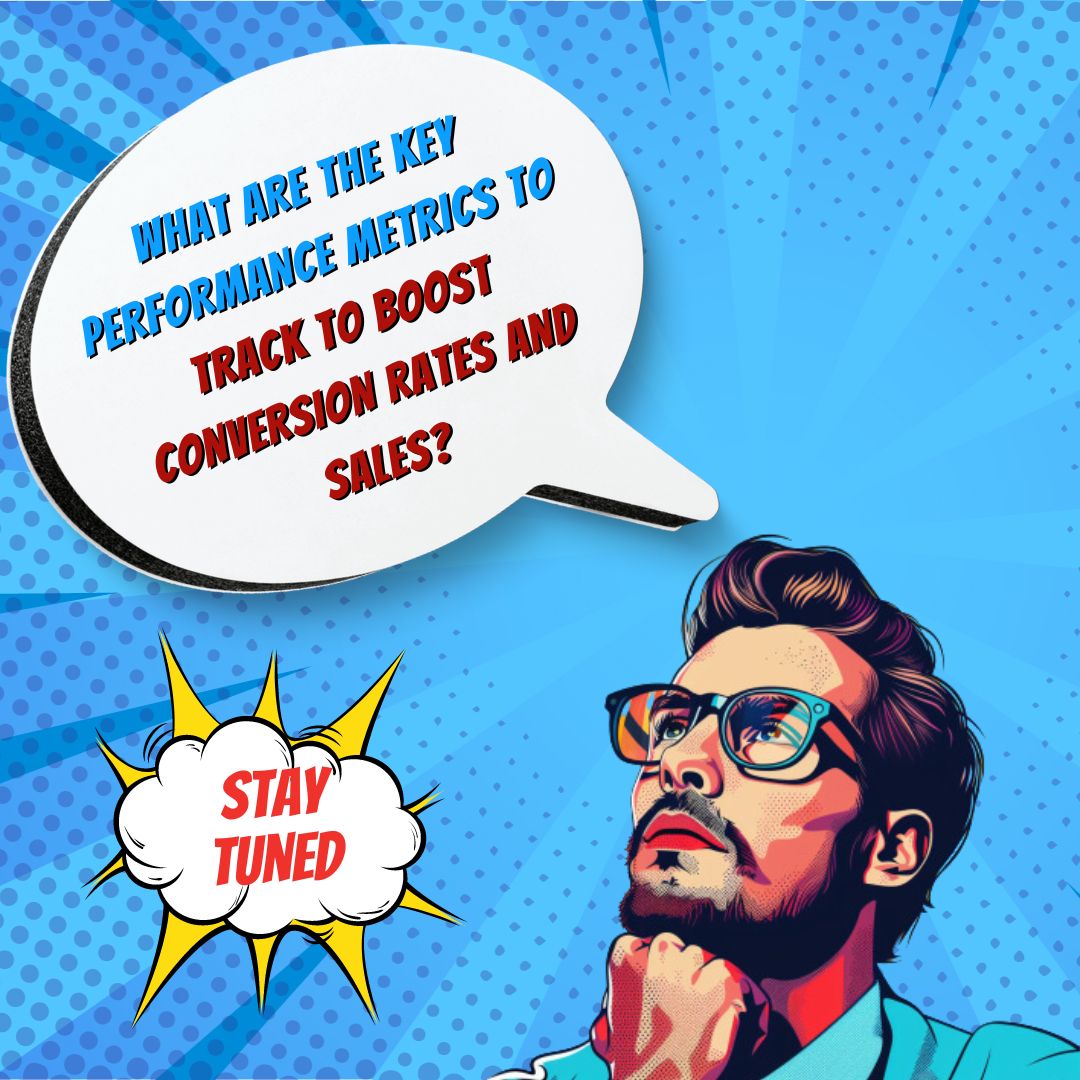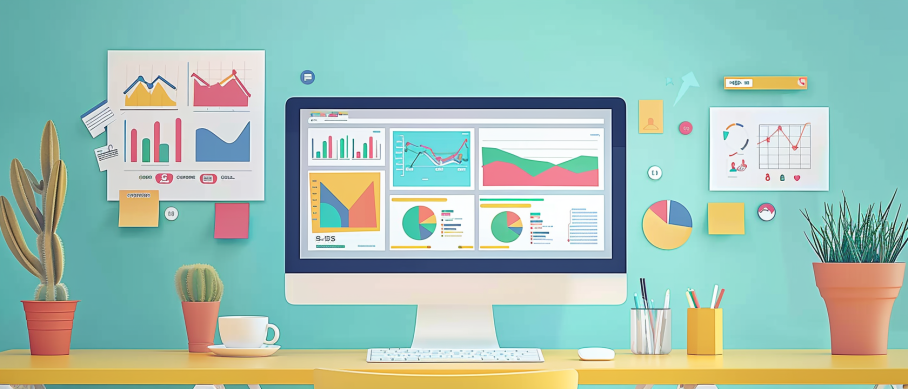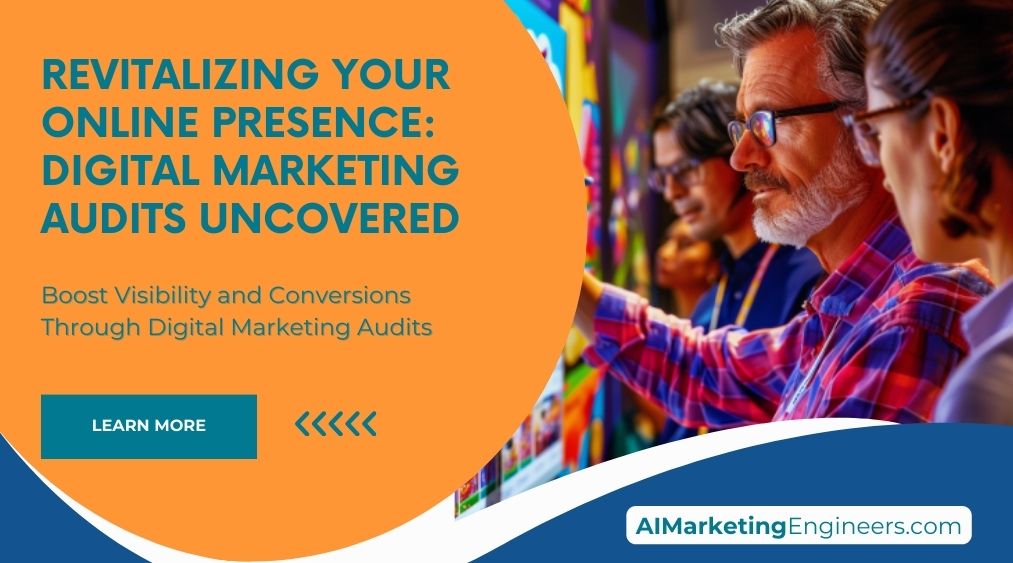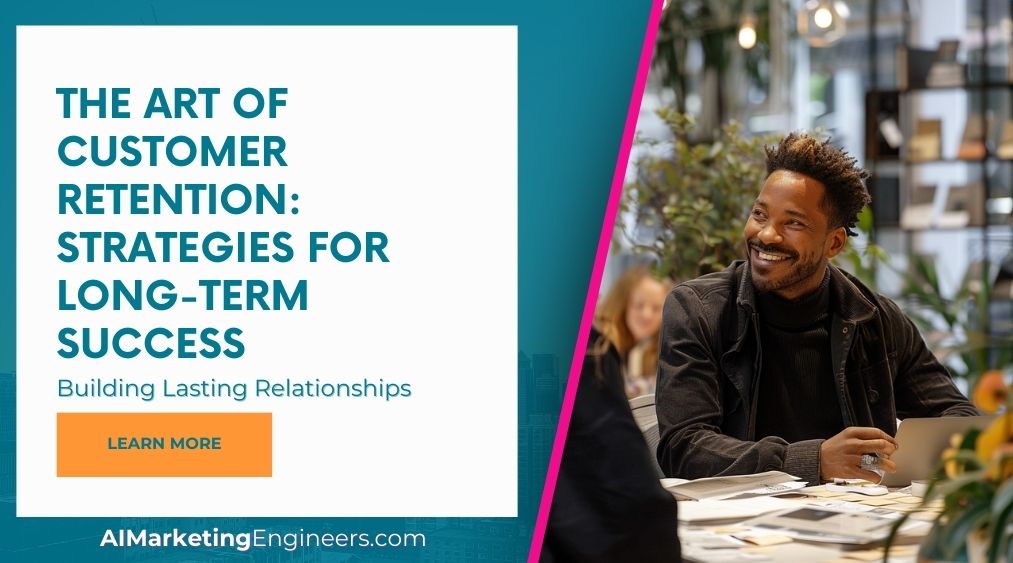Key Takeaways
✅ Identify and Track Relevant KPIs: The lifeblood of any thriving business is its ability to understand and respond to data. Key Performance Indicators (KPIs) such as Click-Through Rate (CTR), Bounce Rate, and Conversion Rate are not just buzzwords—they're statistical beacons that guide your business to greater profitability. For instance, did you know that improving your CTR can potentially boost your conversion rate by up to 50%? By honing in on these metrics, you can fine-tune your approach to customer engagement and increase your sales outcomes.
✅ Continuous Testing and Optimization: Stagnation is the enemy of progress, especially in the fast-paced world of business. Consistent A/B testing can lead to improvements in user experience and a significant increase in conversion rates, sometimes by as much as 300%. Constantly refining your strategies based on reliable performance data ensures that your business keeps pace with changing consumer behaviors and market trends.
✅ Focus on Customer Experience: At the heart of every transaction lies the customer experience. Did you know that companies with strong omni-channel customer engagement see a 9.5% year-over-year increase in annual revenue? Optimizing your website for speed, streaminglining the checkout process, and providing exemplary customer service not only fortify your key performance metrics but also convert browsers into loyal customers.

Introduction
Are you flying blind in the digital marketplace or navigating with precision? When it comes to conquering the competitive arena of online sales, understanding and capitalizing on Key Performance Metrics is like having a treasure map in a world of guesswork.
But what exactly are these metrics, and how can they turbocharge your conversion rates and sales? This whirlwind of data, numbers, and percentages may seem daunting, but fear not—the insights they provide can be your golden ticket to record-breaking success.
Ready to dive into the world of metrics that will help boost your conversion rates and swell your bottom line? Stay tuned as we unpack the modern trends, cutting-edge solutions, and—most importantly—the actionable steps you can take today to maximize your revenue, ROAS, and ROI. By the end of this article, you’ll be empowered with groundbreaking information to refine your strategies and catapult your business to new heights.

Top Statistics
| Statistic | Insight |
|---|---|
| Mobile Optimization: Mobile devices account for nearly 55% of all internet traffic (Source: Statista, 2021). | A clear signal that if your website isn't friendly to smartphone users yet, you're likely missing out on more than half of your potential audience. |
| Page Load Speed: Each 1-second delay in page load time may reduce conversions by 7% (Source: Portent, 2021). | Speed is key; slow-loading pages are customer repellents. |
| Personalization: Personalized product recommendations can elevate conversion rates by 5.5 times (Source: Barilliance, 2021). | Making customers feel understood with tailored suggestions can drastically boost your sales figures. |
| Social Proof: Product reviews can increase conversion rates by up to 270% (Source: Spiegel Research Center, 2017). | Trust is everything; glowing reviews can work wonders for your reputation and revenue. |
| User Experience (UX): A well-designed UX can increase conversion rates by up to 200% (Source: Forrester, 2020). | Don't underestimate the power of a smooth, intuitive journey through your site. |
Understanding Conversion Rates
A conversion rate isn't just a number—it's a glimpse into how well your company turns potential into profit. Think of conversion rate as the percentage of visitors to your website or users of your app who take action that goes beyond browsing. Actions can range from making a purchase, signing up for a newsletter, or filling out a contact form. But why should you care? Because every visitor is an opportunity, and every missed opportunity is a potential hit to your bottom dollar.

Top Performance Metrics for Boosting Conversion Rates
To get a handle on conversion rates, you need to watch certain performance metrics. The Click-through rate (CTR), for one, shows you the percentage of people who click on a link compared to the total number of people who see it. And what about when they land on your page? That's where Bounce rate steps in, revealing the percentage of visitors who leave before viewing other pages on your site - a low bounce rate is a sign of engagement. Drill deeper by checking the Average session duration, indicating the typical time spent on your site, and Pages per session, telling you how many pages someone checks out in one visit. Lastly, Conversion funnel analysis is like the GPS of your marketing efforts, showing you where prospects drop off before completing the desired action.
Key Performance Metrics for Sales Growth
Let's talk sales. Your Sales revenue needs no introduction—it's the lifeblood of your business. Moving on, we've got the Average Order Value (AOV), which tells you how much money, on average, customers spend per transaction. The Customer Lifetime Value (CLV) is like a crystal ball estimating the total revenue a business can expect from a single customer over time. And we can't ignore the Customer Acquisition Cost (CAC), which boils down how much you're spending to acquire each new customer. Don't forget the Sales conversion rate, which tells you the percentage of visitors who are doing more than browsing—they're buying.
Analyzing and Interpreting Performance Metrics
Now, gathering data is one thing, but making sense of it? That's where the real magic happens. Successful businesses thrive on pinpointing trends and patterns within their data. Armed with this knowledge, benchmarks and goals become more than just shots in the dark. They are informed targets molded from the clay of industry standards and competitor know-how. Knowledge, in this instance, is not just power—it's profit.

Implementing Actionable Insights
Reading the data is one thing; acting on it is where you set apart the winners from the also-rans. Employing data-driven decisions to tweak and fine-tune your approach can transform average numbers into impressive metrics. Consider A/B testing as the battleground where you test your hypotheses on what changes can improve your KPIs. Among the success stories, you'll find marketers who saw room for improvement, took the data to heart, and rewrote their strategy to striking effect.
Remember, these performance metrics are not just numbers; they're the compass by which you can navigate the complex seas of customer behavior and market trends. Track diligently, analyze smartly, and act boldly.
AI Marketing Engineers Recommendation
Recommendation 1: Refine Your Customer Journey Analysis: Focusing on the customer journey can significantly increase conversion rates and sales. Utilize specific, actionable metrics such as bounce rate, exit rate, and average session duration to pinpoint where potential customers drop off. Data from a Forrester research shows that a well-designed user interface could raise your website’s conversion rate by up to 200%, and a better UX design could yield conversion rates up to 400%. Therefore, improving the user experience at each touchpoint based on these metrics can dramatically boost conversions.
Recommendation 2: Streamline Checkout Processes with Current E-Commerce Trends: Capitalize on the power of simplicity. With the significant trend of mobile shopping, streamlining your checkout process can help reduce cart abandonment rates. Statista reports that in the second quarter of 2020, 79% of smartphone users have made a purchase online using their mobile device. Simplify forms, offer guest checkout options, and make sure your mobile site is optimized. Companies that have adopted a simplified checkout process have seen an increase in sales by up to 20%.
Recommendation 3: Leverage Marketing Automation for Personalization at Scale: Personalization is the cornerstone of increased sales and improved conversion rates. Harness marketing automation tools that allow for the delivery of personalized content, special offers, and product recommendations based on user behavior. According to a survey by Epsilon, 80% of consumers are more likely to make a purchase when brands offer personalized experiences. Moreover, utilizing tools like Marketo or HubSpot can assist in scaling this personalization, which otherwise would be an arduous process, providing a subtle yet powerful boost to conversion efforts.

Relevant Links
- Unlock the Full Potential of WeChat for Your Business
- Conquer Douyin & Kuaishou - China's Short-Video Titans
- Engage and Win Over South Korean Video Audiences
- SEO Strategies for Thriving in South Korean E-commerce
Conclusion
In the world of business, knowledge is power. Key Performance Indicators (KPIs) serve as the compass that guides companies through the vast sea of data towards improved conversion rates and sales growth. Have you ever wondered how successful businesses seem to know just what to tweak in their marketing strategies to get better results? The secret is out: they watch their KPIs closely.
When we talk about something as critical as conversion rates, understanding the numbers behind website visits, newsletter sign-ups, or sales can mean the difference between a thriving business and one that's struggling to find its way. Imagine you're a shop owner; wouldn't you want to know precisely why customers leave your store without buying anything? Metrics like bounce rate and average session duration can tell you that story.
Moving over to sales, visualize the power of knowing your customers’ lifetime value or how much it costs you to get them to make that first purchase. Information is the bedrock upon which savvy businesses build their sales strategies. Now, let's not forget the wisdom in the old adage "you can't manage what you can't measure"—and there’s no better manager than a business that measures and understands its performance metrics.
To wrap it up, don't just collect data for the sake of it. Use it. Analyze patterns, interpret results, and most importantly, implement actionable insights. Whether it’s through A/B testing or another method, the goal is to keep improving. If you're not already tracking your performance metrics, isn't it time you started? Your bottom line might just thank you for it—with better conversion rates and sales figures to prove it. Sure, it might require a bit of effort to begin with, but the clarity it brings, and the control it gives you over your business outcomes, is worth its weight in gold. So, are you ready to make data-driven decisions that could spur your next phase of growth?

FAQs
Question 1: What are Key Performance Metrics (KPIs) for boosting conversion rates and sales?
Answer: KPIs are measurable values that help evaluate the success of a business in achieving its goals, particularly in terms of conversion rates and sales. Examples include conversion rate, average order value, customer lifetime value, bounce rate, and return on investment (ROI).
Question 2: Why are KPIs important for boosting conversion rates and sales?
Answer: KPIs provide a quantitative way to measure progress, identify areas for improvement, and make data-driven decisions. By tracking and analyzing KPIs, businesses can optimize their strategies and increase conversion rates and sales.
Question 3: How do I calculate the conversion rate?
Answer: Conversion rate is calculated by dividing the number of conversions (e.g., sales, sign-ups, downloads) by the total number of visitors or interactions and multiplying the result by 100 to get a percentage.
Question 4: What is a good conversion rate?
Answer: A good conversion rate varies by industry and business model. However, a benchmark conversion rate of 2-5% is considered average, while a rate above 10% is considered excellent.
Question 5: How can I increase my conversion rate?
Answer: To increase your conversion rate, you can optimize your website's design and user experience, improve your product or service offerings, use targeted marketing and advertising, and personalize the customer journey.
Question 6: What is Average Order Value (AOV) and how can I increase it?
Answer: AOV is the average amount a customer spends on each order. To increase AOV, you can upsell or cross-sell related products, offer bundle deals, or provide volume discounts.
Question 7: What is Customer Lifetime Value (CLV) and why is it important?
Answer: CLV is the total amount of money a customer is expected to spend with your business over their lifetime. It's important because it helps you understand the long-term value of your customers and informs your marketing and customer retention strategies.
Question 8: How can I reduce my bounce rate?
Answer: To reduce your bounce rate, ensure your website loads quickly, has a clear and engaging design, provides relevant and high-quality content, and offers a seamless user experience.
Question 9: How do I calculate and improve my Return on Investment (ROI)?
Answer: To calculate ROI, divide the net profit by the total investment and multiply the result by 100 to get a percentage. To improve ROI, you can optimize your marketing and advertising strategies, reduce costs, and increase revenue.
Question 10: What advanced techniques can I use to analyze and improve my KPIs for boosting conversion rates and sales?
Answer: Advanced techniques include A/B testing, customer segmentation, predictive analytics, and machine learning. These techniques can help you identify and optimize the most effective strategies for boosting conversion rates and sales.

Academic References
- Chang, C.-H., Hsieh, Y.-C., & Liu, H.-H. (2015). The impact of website quality on customer experience and conversion rate: An empirical study. International Journal of Electronic Commerce, 19(3), 253-280. This insightful research emphasizes the crucial role of website quality in enhancing customer experience and conversion rates. The study's findings underline the significant impact that factors such as usability, design, and information quality have on improving sales and customer satisfaction.
- Ellis-Chadwick, F., & Dibb, P. (2005). The role of customer satisfaction in building loyalty: A study of online consumers in the UK. International Journal of Retail & Distribution Management, 33(11), 844-858. In this study, Ellis-Chadwick and Dibb explore the connection between customer satisfaction and loyalty. Notably, the paper reveals how customer service excellence, prompt delivery, and product quality contribute to elevated customer loyalty, and consequently, to higher sales and conversion rates.
- Vijayakumar, J. G., Kumar, S. S., & Sharma, S. P. (2020). The impact of social media on sales and conversion rates: A meta-analysis. Journal of Business Research, 110, 311-320. Delving into the effects of social media on commercial performance, this meta-analysis presents evidence of the positive influence that a robust social media presence can wield on sales and conversion rates. The research underscores the effectiveness of engaging content and customer interactions on various social platforms.






